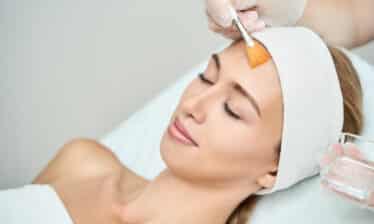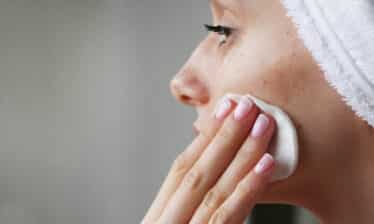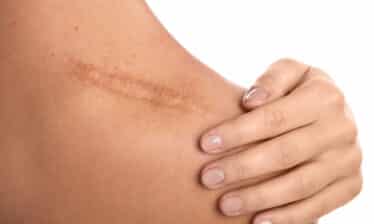Acne is a common problem. Many teenagers and young adults experience traditional acne, which is caused by a combination of excess skin oil and the bacteria p. acnes.
Modern skin care treatments can help most people treat this form of acne, but some experience frustrating, reoccurring breakouts that nothing seems to fix. If you’re one of these people, you may be facing something entirely different: fungal acne.
What Is Fungal Acne?
As you might expect from the name, fungal acne is caused by a fungus, not a bacteria. Instead of p. acnes, the blemishes are caused by the fungus Malassezia furfur, leading to a condition officially known as “ Pityrosporum Folliculitis,” or PF.1 As a result, treatments that focus on bacteria simply won’t work to prevent your breakouts.
If you suspect you may have fungal acne, you’re not alone. Keep reading to learn the differences between bacterial and fungal acne, what conditions lead to fungal acne, and how to treat and prevent fungal acne breakouts with My Skin Treatment.
What Causes Fungal Acne?
As previously noted, fungal acne is caused by the yeast-like fungus Malassezia.2 This fungus is found on everyone’s skin. Only when it finds the right conditions will it cause pityrosporum folliculitis.
To be problematic, Malassezia needs three things:3
- Plenty of sebum (skin oil) to eat
- A warm, humid environment
- A lack of other microbiota like bacteria with which to compete
Basically, you’re more likely to develop fungal acne if you have oily skin, at those times when you frequently sweat (such as during the summer or while working out regularly), and after you’ve taken antibiotics.
In fact, more than half of people in a recent retrospective study on PF were found to have taken antibiotics of some type in the months before their diagnosis4. The thought is that antibiotics may kill the normal bacteria on your skin which keep Malassezia under control, allowing it to grow dramatically and cause acne. You can also run into this issue if your immune system is suppressed or if you overclean your face.
What Are the Symptoms of Fungal Acne?
At first glance, fungal acne looks almost identical to p. acnes blemishes.5 Both conditions lead to small, inflamed, red bumps in the skin that are filled with pus. However, there are three ways to tell them apart. Fungal acne symptoms include:6
- Itchiness. The blemishes caused by Malassezia are almost always itchy, while p. acnes spots rarely are.
- Uniformity. P. acnes causes irregular, blotchy spots, while Malassezia causes small, separated, uniform bumps at each hair follicle it affects.
- Persistence. Common acne medications like benzoyl peroxide were explicitly developed to fight p. acnes, not Malassezia. If you’re using benzoyl peroxide and seeing no effect, then you’re probably facing fungal acne.
Basically, if your spots are persistent, itchy, and each one looks almost identical, then you may have fungal acne, and you should talk to a dermatologist about your concerns. They will help you figure out the right course of treatment and prescribe appropriate antifungal medications for you.
How to Treat Fungal Acne
Once you’re sure you have fungal acne, you can begin to treat it. Fungal acne treatment requires significantly different substances than p. acnes treatment.7 Medications that work on bacteria rarely or never work to handle fungal overgrowths. Instead, you need to use treatments designed for fungus. There are two main types of antifungal treatments you can use: topical and oral. Here’s what they are and how they work.
Topical Fungal Acne Treatments
A topical treatment is something you apply directly to the affected area. For example, many acne treatments are creams that you can rub onto your blemishes. The medication in the cream soaks into your skin and kills whatever’s causing the acne.
In the case of PF, you’re looking for creams that contain ketoconazole and sulfur.8 These substances break down fungus structures, letting your skin recover. You’ll apply the cream daily until the breakout is entirely gone. You may need a dermatologist’s prescription to get antifungal creams, so make sure you talk to your doctor if you suspect you have fungal acne.
Oral Fungal Acne Medications
For more severe cases of PF, your dermatologist might recommend that you take oral antifungal medications.9 These medications are absorbed by your body and carried to every part of your skin. If you’re having dramatic breakouts, your dermatologist will probably recommend oral fluconazole to resolve your fungal acne as quickly as possible. Most fluconazole treatments last three to four weeks.
How to Prevent Fungal Acne
Even if you’re still treating your current fungal acne breakout, you can work on preventing future blemishes. Fungal acne prevention is much easier than bacterial acne and as simple as following a few basic guidelines:10
- Shower as quickly as possible after working out. The faster you clean your skin of sweat and oil, the less likely it is that Malassezia will have time to cause problems.
- Avoid re-wearing clothes and wash your sheets often. Clothing and bedding absorb body oils. Re-wearing clothes, especially swimwear and exercise gear, can deposit those oils back on your skin and give Malassezia the environment it needs to cause acne. The same goes for your bedding. Wash everything often to keep your skin safe.
- Start using dandruff shampoo. Dandruff is actually caused by the same fungus that leads to PF. Using a dandruff shampoo a few times a month can help prevent Malassezia overgrowth and keep your skin clear11.
- Use a gentle antifungal face cream. If your fungal acne is on your face, dandruff shampoo may be too harsh. Instead, use a sulfur-based face cream a few times a month to prevent future outbreaks.
In general, by keeping yourself and your clothes clean and simply using antifungal shampoo or face cream regularly, you can keep fungal acne away for good.
Clearing Up Fungal Acne Is Easier Than You’d Think
While the term “fungal acne” is scary, pityrosporum folliculitis is actually one of the easiest forms of acne to treat. If you have itchy, annoying fungal acne, you can probably cure it with a simple round of antifungal treatments.
Once it’s gone, you can keep it out of your life by taking extra care with your hygiene and using a preventative antifungal treatment like dandruff shampoo a few times a month. In combination with the information from My Skin Treatment, you’ll be able to keep your skin clear, healthy, and feeling great.
SOURCES:
1, 2, 3. Journal of the American Academy of Dermatology: “ Pityrosporum folliculitis: A common disease of the young and middle-aged.“
4, 5, 7, 8, 9. Journal of the American Academy of Dermatology: “ Pityrosporum folliculitis: A retrospective review of 110 cases.”
6. Journal of the Arkansas Medical Society: ” The importance of recognizing yeast acne Malassezia versus Priopionibacterium.“
10. Archives of Pediatrics and Adolescent Medicine: “ Pityrosporum Folliculitis: Diagnosis and Management in 6 Female Adolescents With Acne Vulgaris.“
11. Mycopathologia: ” The anti-fungal action of dandruff shampoos.“






